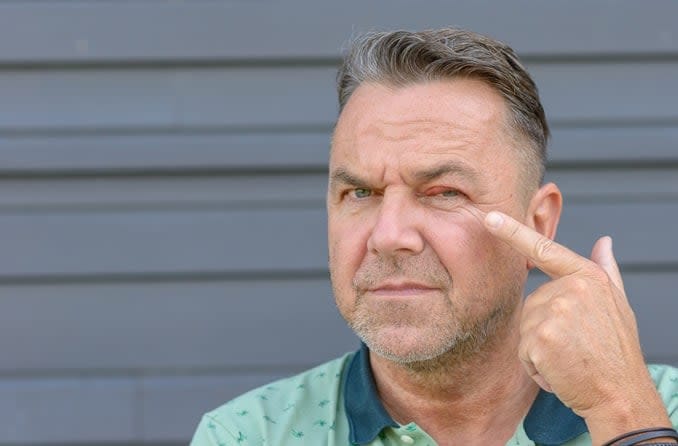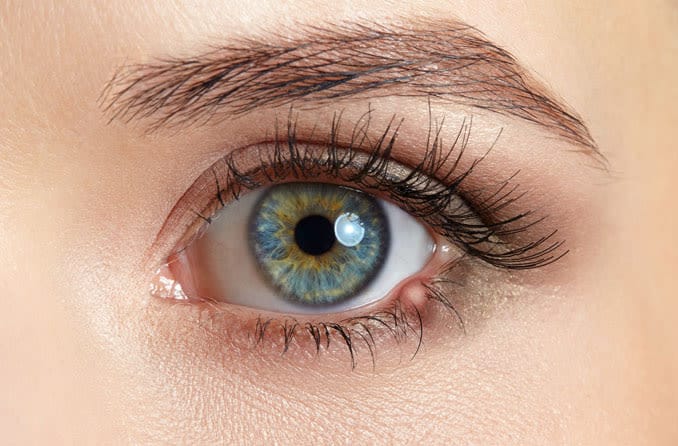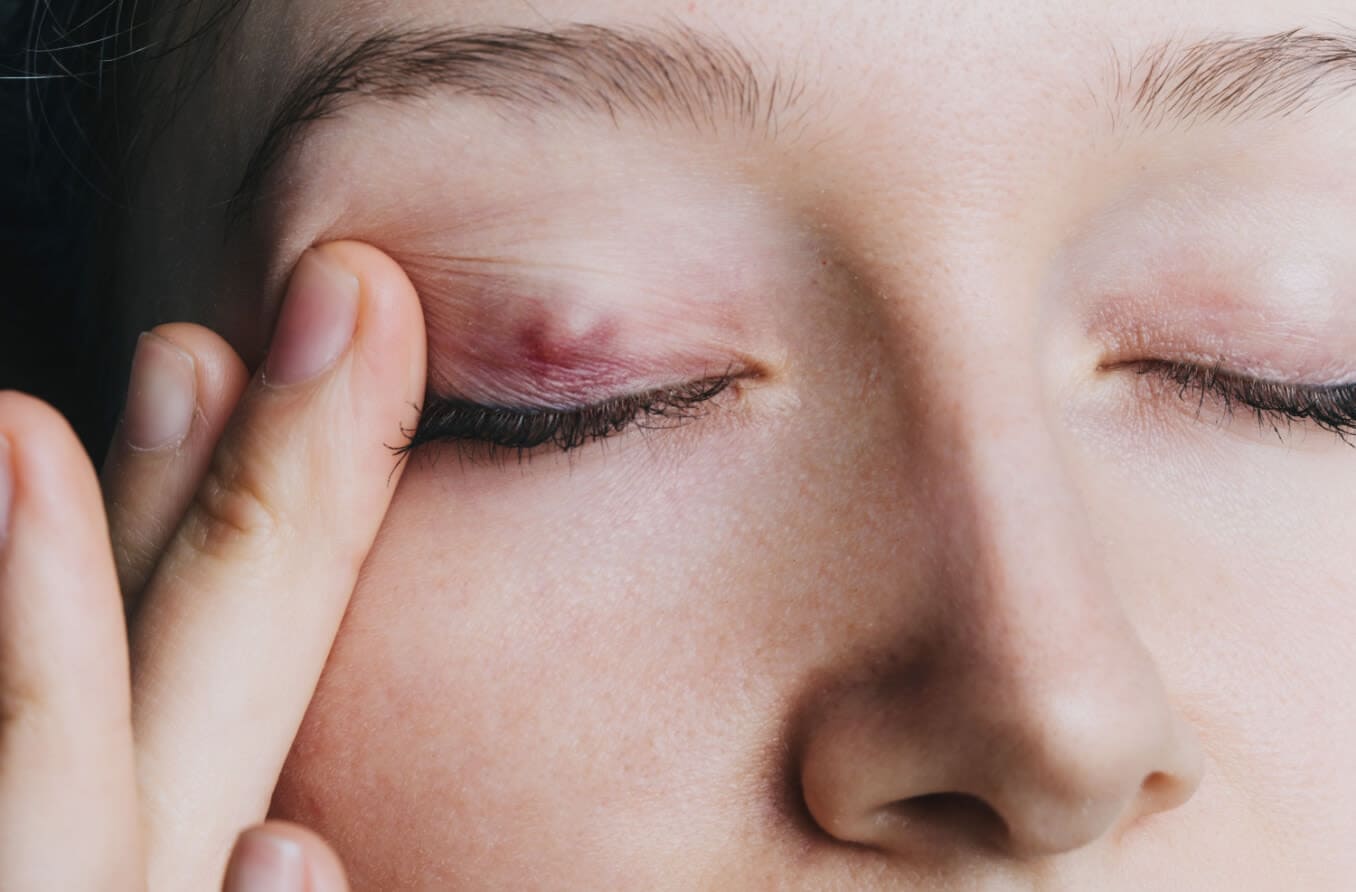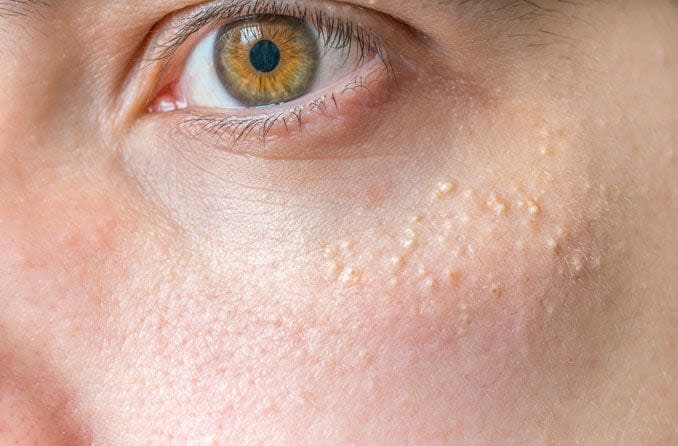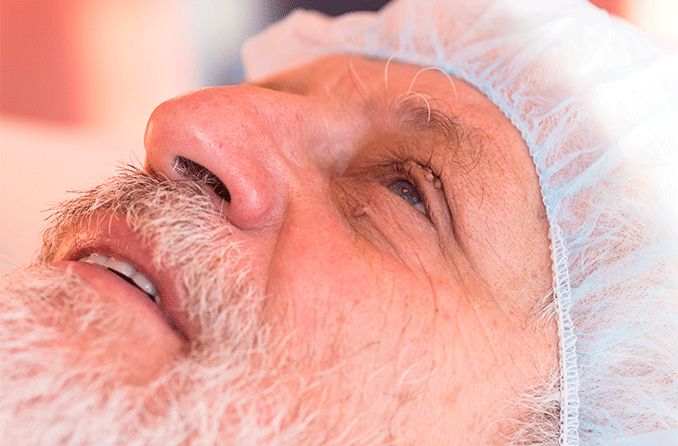What is an eyelid bump?
An eyelid bump is any lump or protrusion affecting the normal contour of the surface or margin of the eyelid. Examples of eyelid bumps include a stye (or hordeolum) and a chalazion.
While many eyelid bumps go away on their own within a few days, persistent or painful bumps may require evaluation and treatment by an eye doctor.
Most eyelid bumps are due to a bacterial infection of a gland in the eyelid that produces oil to lubricate the surface of the eye or the follicle of an eyelash.
These eyelid bumps usually start as a small red bump on the eyelid — most commonly along the lash line. Because they can be painless and often start off very small, many people do not realize that they even have an eyelid bump until the bump has progressed or grown in size.
Types of eyelid bumps
Identifying the type of eyelid bump that you have is key to deciding whether to treat it at home or reach out to your eye doctor for diagnosis and treatment.
Stye
The term stye is usually used to describe an eyelid bump called an external hordeolum — which is a red, pimple-like bump on the upper or lower eyelid near the eyelash line.
Styes can become painful and unsightly if left untreated.
An external hordeolum or stye is usually caused by a bacterial infection of a Zeis gland that produces oil that drains into the follicle of an eyelash.
SEE RELATED: Stye treatment: Get rid of a stye fast
Internal hordeolum
An internal hordeolum is an eyelid bump that affects more of the middle portion of the lid (further from the lash line).
Also called an internal stye, an internal hordeolum is due to a bacterial infection and/or blockage of a meibomian gland in the eyelid. These glands produce oil that is secreted into the tear film to slow the evaporation of tears from the surface of the eye.
An internal hordeolum is typically more painful than an external hordeolum.
Chalazion
A chalazion is a painless eyelid bump that usually affects an upper eyelid.
Most often, a chalazion is caused by a clogged meibomian gland. It may begin as an internal hordeolum, or it can occur without bacterial infection.
Like styes, these eyelid bumps may heal on their own, though sometimes surgical treatment is required to drain or remove a chalazion.
Milia
Milia are very small white or ivory-colored bumps that can appear on your eyelids, elsewhere on your face or anywhere on your body. They are common among newborns but can affect children and adults as well.
Milia occur when dead skin flakes get trapped in tiny pockets under the surface of your skin. These bumps tend to go away on their own in infants but can be persistent in older children and adults.
Milia are harmless but can be surgically removed if they cause a cosmetic concern.
Cancer
While less common, eyelid bumps and cysts can sometimes be an indicator of a more serious condition such as skin cancer, including basal cell carcinoma (BCC).
Signs that an eyelid bump may be cancerous include:
- A whitish, smooth waxy lump
- A brown scaly patch
- A new eyelid growth that doesn’t resemble a stye or chalazion
- A change to an existing mole or freckle on an eyelid
If you have an eyelid bump that matches any of these descriptions, consult your eye doctor immediately for a medical diagnosis.
SEE RELATED: Eyelid skin tags: Causes and treatment
Treating eyelid bumps
The good news is that most eyelid bumps can resolve on their own or with minimal medical intervention. Despite the discomfort that some types of eyelid bumps can cause, most are harmless in the long run and will require very little treatment.
Home remedies
The most common home remedy for eyelid bumps is a simple warm compress. Placing a warm (not hot) wet cloth over the bump for 5-10 minutes several times a day can help the bump drain naturally.
Never, ever attempt to pop or drain an eyelid bump or stye by yourself. This can cause the stye to worsen or produce a more serious infection.
While using a warm compress to encourage the natural healing of the bump, you should also ensure that the area is kept clean and disinfected to help aid in healing and prevent future eyelid bumps or styes.
Medicines
For bumps caused by a bacterial infection, your eye doctor may prescribe antibiotic eye drops or topical ointment to help clear up the eyelid bump or stye. In cases in which the infection is believed to have spread beyond the eyelid, oral antibiotics may also be prescribed.
When an eyelid bump or stye is sensitive or tender, taking an over-the-counter nonsteroidal anti-inflammatory drug (NSAID) pain reliever may help reduce swelling and discomfort.
Surgery
In more serious cases in which the bumps do not go away over the course of a couple of weeks, your eye doctor has a few surgical options to treat eyelid bumps.
The most common type of surgical procedure for eyelid bumps and styes is called incision and curettage (I&C). The procedure takes 15 minutes and requires only a local anesthetic. Other than some post-operative bruising, recovery time is short with little to no discomfort.
When to see an eye doctor for an eyelid bump
The best way to avoid eyelid bumps is with a combination of increased eye hygiene (especially when it comes to contact lenses and cosmetics) and avoiding touching your eyes throughout the day.
If you are experiencing an eyelid bump (whether painless or painful) and would like to know the best treatment approach to take, you should make an appointment with your preferred eye care provider.
READ NEXT: Eyelid papilloma: Benign eyelid tumors
